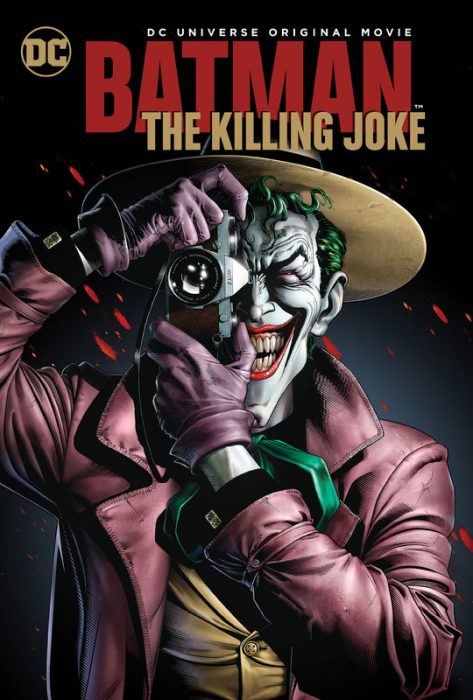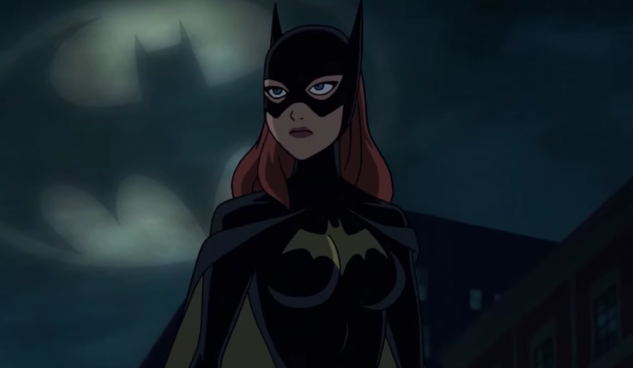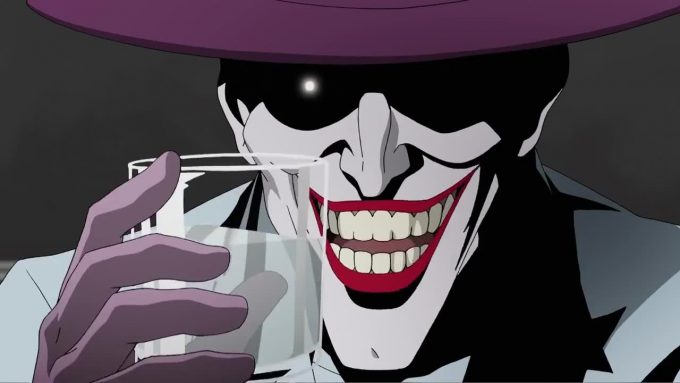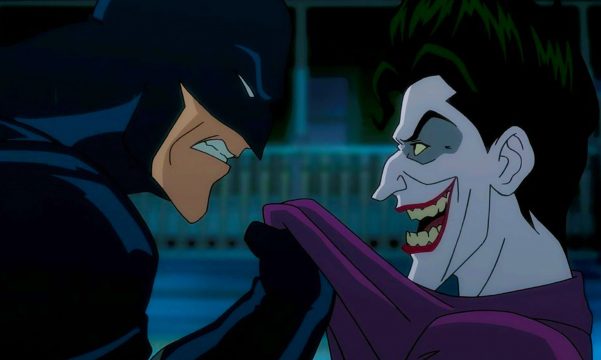
Alan Moore’s Batman graphic novel The Killing Joke is both one of the most influential and- still, to this day- controversial stories starring the Caped Crusader. Over the years it’s received acclaim for its shrewd psychological study of the Joker’s personality and madness, influencing the performances of Jack Nicholson, Heath Ledger and many others, as well as the stunning interior artwork by Brian Bolland.
On the other hand, it’s also been harshly criticized for its sexually graphic and violent themes- specifically, the manner in which Commissioner Gordon and his daughter Barbara (a.k.a Batgirl) are tormented by the clown prince of crime. Even Moore himself has mentioned regretting many of his creative decisions for TKJ in interviews.

When it was announced that writer Brian Azzarello, producer Bruce Timm and director Sam Liu were developing an animated adaption of the infamous story, it re-ignited debates over its merits, and the news of additional scenes featuring Batgirl in a more prominent role also got a mixed reception. I think the idea was to give her more agency and character development, but the execution leaves something to be desired.
Performed with pluck by voice acting legend Tara Strong, Barbara and Batman (Kevin Conroy) open the film pursuing an egotistical mobster set to inherit his father’s empire. Batman gradually becomes bothered by Barbara risking her life, and eventually, is no longer willing to be her partner. This proceeds an impromptu sex scene under a gargoyle as their chemistry evolves into a forbidden romance.
This is a mistake, I feel. I don’t think this added arc serves Barbara any better, or makes her eventual attack and exploitation at the hands of Joker any less of a quick disposal. By focusing on Bruce and Barbara’s sexual urges as opposed to their connection as fellow crimefighters, it doesn’t feel as organic as it should. Not to mention Babs is frequently scolded like a child by Bruce, even though she’s college age at the very least. She feels more like an impulsive kid in over her head as opposed to a fallen soldier, and altogether she actually feels less empowered than before.

And when tragedy strikes as Jim Gordon (a solid Ray Wise) and Barbara are brutally attacked by the Joker, Batman’s fixation turns towards Joker and his inner workings. The main story of The Killing Joke begins, and he grills an inmate over the escaped jester’s whereabouts as he did in the original comic. However, his romantic angst is more or less shuffled off to the side as he hunts his old adversary throughout Gotham, while the film recreates the novel’s flashbacks to Joker’s origins as a failed comedian turned petty thief.
For me, that made the eventual conclusion not very satisfying. The new romantic subplot may have been cheap and cliche, but as far as fighting on Barbara’s behalf, it was something. By going so hard to rehabilitate his old rival over extracting revenge for the Gordons, I had trouble becoming emotionally invested in the outcome as he pursues Joker through an old amusement park turned deadly funhouse.

To be fair, Mark Hamill performs his role incredibly well. His Joker has always struck a good balance between mischievousness and a sinister menace, and he’s totally comfortable bringing out a more cerebral Joker as he recites Moore’s complex dialogue. Combined with some striking reimaginings of Bolland’s classic panels through Timm’s art direction, he helps give Killing Joke an intriguing and creepy aura overall. As a whole, the animation is pretty decent, and former Batman Beyond composer Kristopher Carter contributes to a score that’s quite haunting.
Unfortunately, the added material derails what I felt was a flawed, if interestingly flawed, story to begin with. The Killing Joke movie, much like the original book, is never boring, but I think the overall story sucks. At times it is a genuinely fascinating study into the Joker’s mind, but even if you don’t feel his scheme, which definitely earns this film an R-rating, falls into poor taste- and I can certainly understand if for you it does- it comes at the expense of making Batman a truly empathetic figure, and it fails to show exactly why Barbara Gordon has become a symbol of strength to many of her fans.
I personally can’t recommend this animated Batfilm, but I will put in a good word for Mask Of The Phantasm. It features an equally good performance by Hamill as Joker, but he’s nowhere as overpowered as he is here, and Bruce’s arc is more inspiring.
